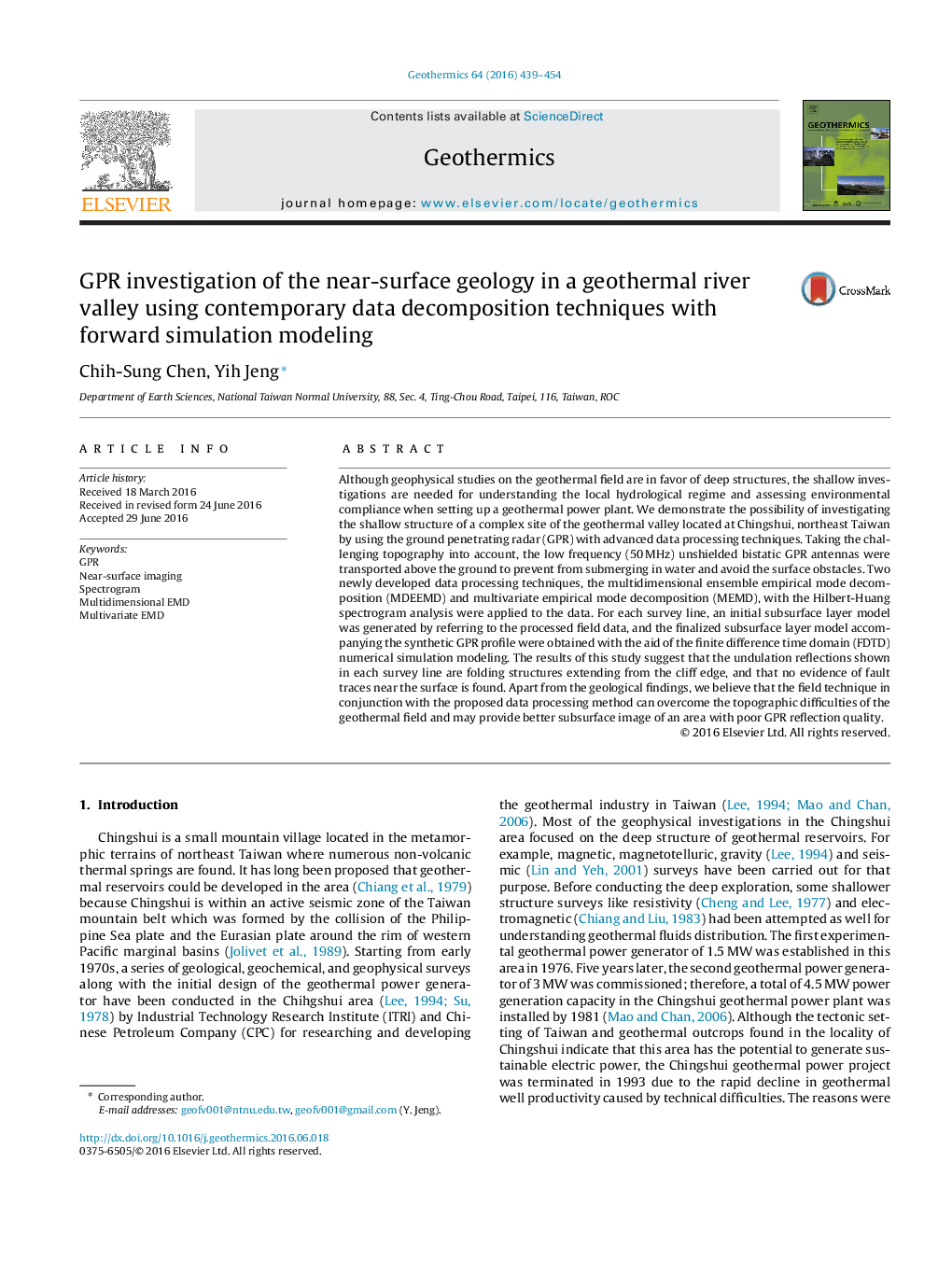| Article ID | Journal | Published Year | Pages | File Type |
|---|---|---|---|---|
| 8088882 | Geothermics | 2016 | 16 Pages |
Abstract
Although geophysical studies on the geothermal field are in favor of deep structures, the shallow investigations are needed for understanding the local hydrological regime and assessing environmental compliance when setting up a geothermal power plant. We demonstrate the possibility of investigating the shallow structure of a complex site of the geothermal valley located at Chingshui, northeast Taiwan by using the ground penetrating radar (GPR) with advanced data processing techniques. Taking the challenging topography into account, the low frequency (50Â MHz) unshielded bistatic GPR antennas were transported above the ground to prevent from submerging in water and avoid the surface obstacles. Two newly developed data processing techniques, the multidimensional ensemble empirical mode decomposition (MDEEMD) and multivariate empirical mode decomposition (MEMD), with the Hilbert-Huang spectrogram analysis were applied to the data. For each survey line, an initial subsurface layer model was generated by referring to the processed field data, and the finalized subsurface layer model accompanying the synthetic GPR profile were obtained with the aid of the finite difference time domain (FDTD) numerical simulation modeling. The results of this study suggest that the undulation reflections shown in each survey line are folding structures extending from the cliff edge, and that no evidence of fault traces near the surface is found. Apart from the geological findings, we believe that the field technique in conjunction with the proposed data processing method can overcome the topographic difficulties of the geothermal field and may provide better subsurface image of an area with poor GPR reflection quality.
Keywords
Related Topics
Physical Sciences and Engineering
Earth and Planetary Sciences
Geochemistry and Petrology
Authors
Chih-Sung Chen, Yih Jeng,
